I love touring homes, including Louisiana Plantations! All homes. Let me tell you about my recent visit to a few Louisiana plantation homes in particular. There must be hundreds of these plantations in all sizes and shapes, and in varying degrees of opulence.
There are, however, no more than a few dozen in Louisiana available for public tours. Some are actually simple and unpretentious properties; not at all what I expect when I think of plantation homes.
After the end of slavery and the Civil War, many of the plantations still remaining went into a decline, and most never regained their pre-Civil War grandeur. You can expect to pay a small fee to tour these homes but many offer discounts for seniors, AAA, or AARP.
Some of the plantations have a restaurant and gift shop on-site. Tours have usually timed tours, every half hour or hour, and the guides sometimes wear period dresses.
All of the guides at all of the plantations have surprising amounts of information and tell the stories of these beautiful old homes and gardens in entertaining and occasionally spellbinding ways. Each website provides detailed information to assist you in planning this type of adventure.
A trip is born
A couple of my girlfriends and I decided to take this brief adventure trip to Louisiana to visit some of these plantations along River Road. We based our stay at L’auberge du Lac Hotel and Casino, Baton Rouge, Louisiana. The weather was perfect, and the drive from home was reasonably short — about four and a half hours.
We reserved two adjoining rooms using our comped room offers. So this is how this trip came about — a free hotel offer within driving distance. The three of us enjoyed nightly “senior slumber parties,” hilarious fun, and great conversation late into the evening.
My only preparation for this trip was to check the internet for plantations in the vicinity of Baton Rouge that looked interesting. I read each plantation’s webpage and then compiled a typed narrative of several of the plantations in the area, within comfortable driving distance for us, and downloaded GoogleMaps links to each property.
Since we had cell service throughout the trip, we did not need the links. Better to be prepared, though. I’ve been lost on a back road too many times to depend on cell service when traveling off main roads.
My narrative included far too many plantations to drive to in our short time but it gave us all the information we needed to pick and choose which direction we wanted to go in. I do not like being tied down to exact plans, as in “at 3 p.m. we will do this and at 4 p.m. we will do that.
I like the exact destination to be a last-minute decision based on how we feel, the time of day, the weather, or even just a whim. The three of us shared all expenses, so this was indeed an economical four-day trip. On our way back to Texas we stopped in Lafayette and toured a beautiful old cemetery even.
Houmas House
40136 Highway 942
Darrow, LA 70725
https://houmashouse.com/
225-473-9380

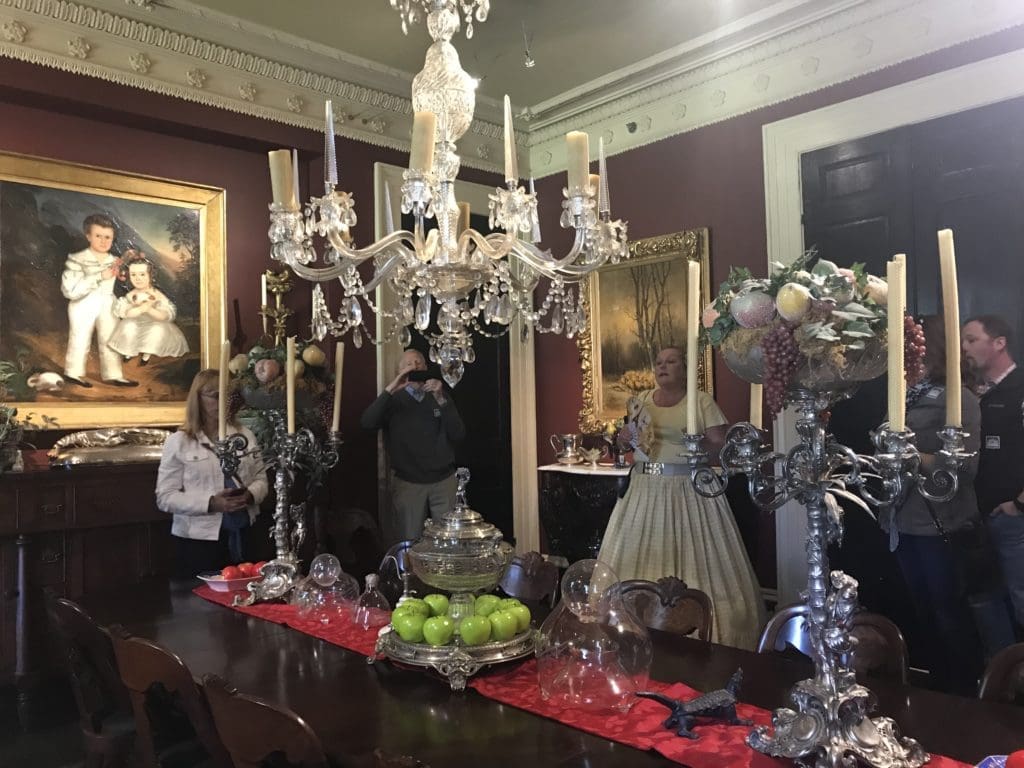
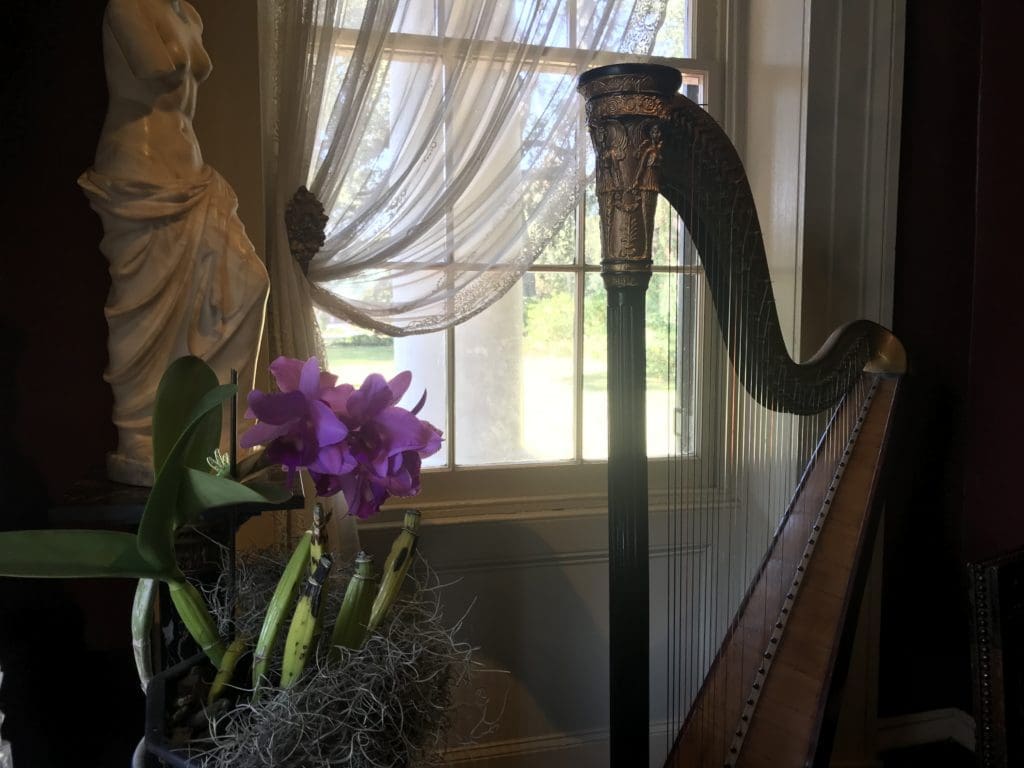
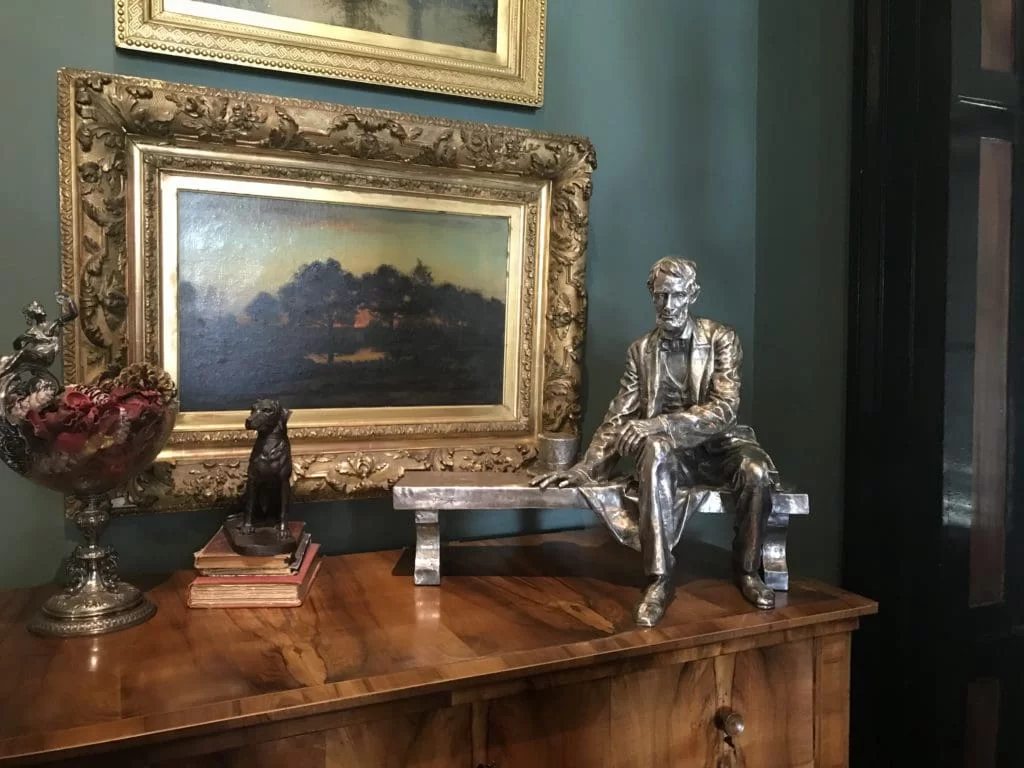
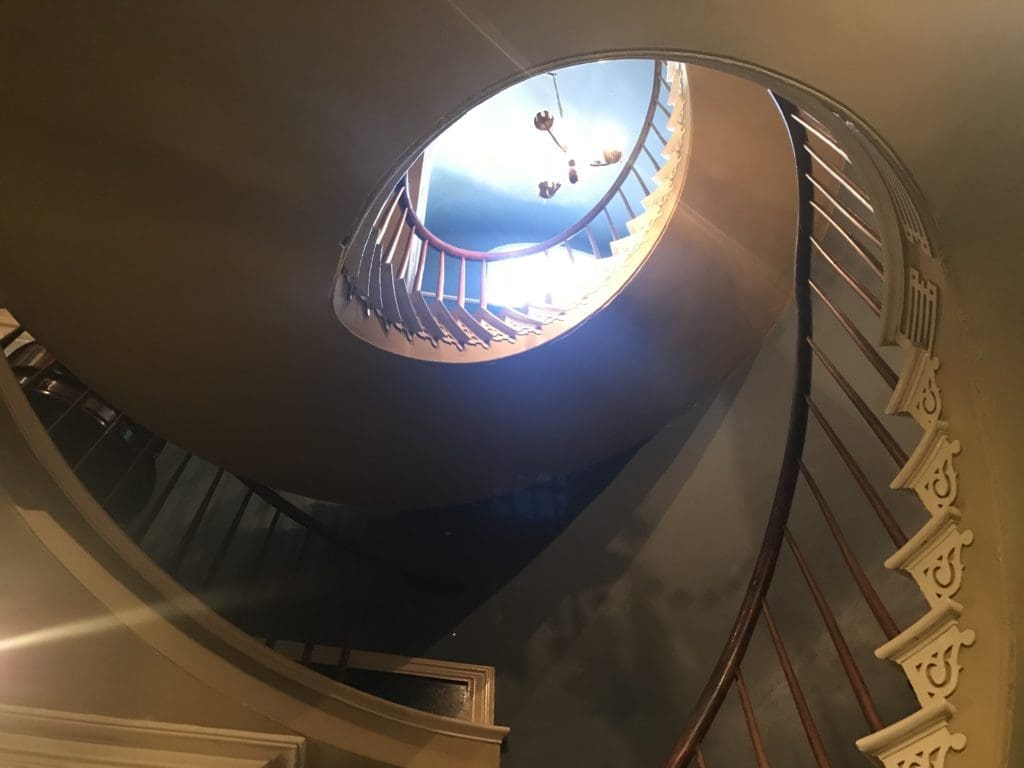
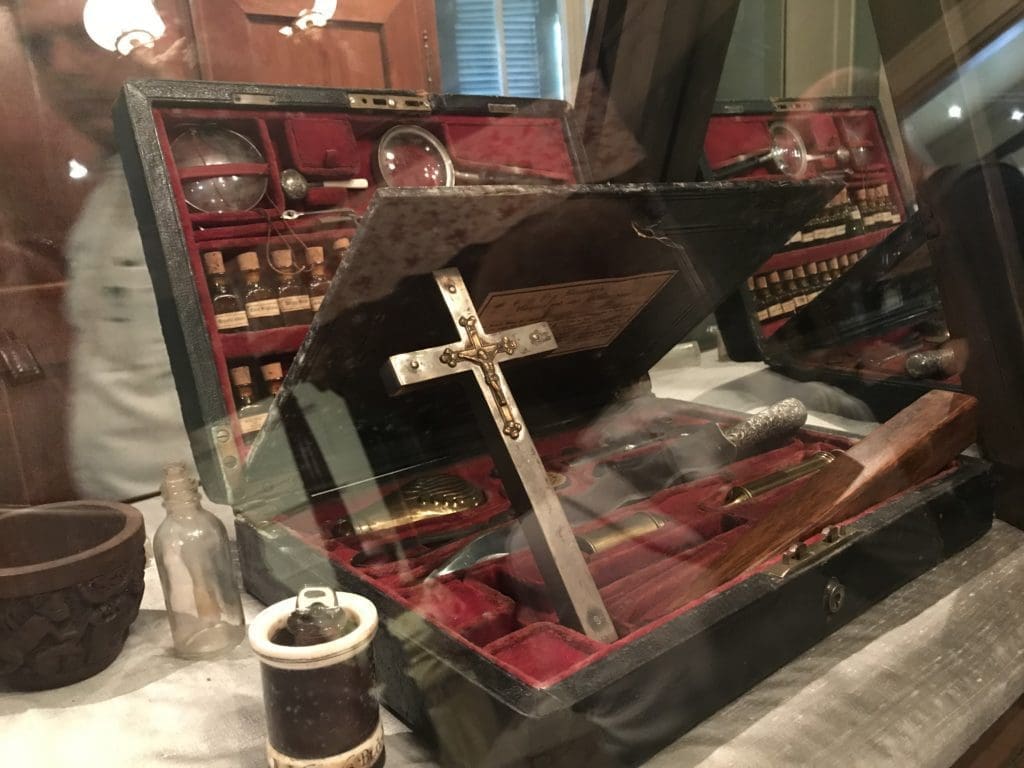
We visited Houmas House earlier this year on another trip but did not have enough daylight left after the home tour to see the gardens. We did, however, have an excellent dinner at the restaurant on the property, The Carriage House.
This time around, we toured the extensive gardens as well as the plantation home. Beautiful! The current owner of Houmas House, Kevin Kelly, purchased and renovated the property in 2003. He is a huge dog lover, and dogs are welcome on the property.
There are restaurants, an inn, gardens, ghosts — everything a plantation in the south should have. Hush Hush Sweet Charlotte is one of the movies filmed here. Take a look at the Houmas House website if you’d like to learn more about this great property.
As we waited for our tour start time, Judy and Earney picked satsumas from one of the many trees in the gardens.
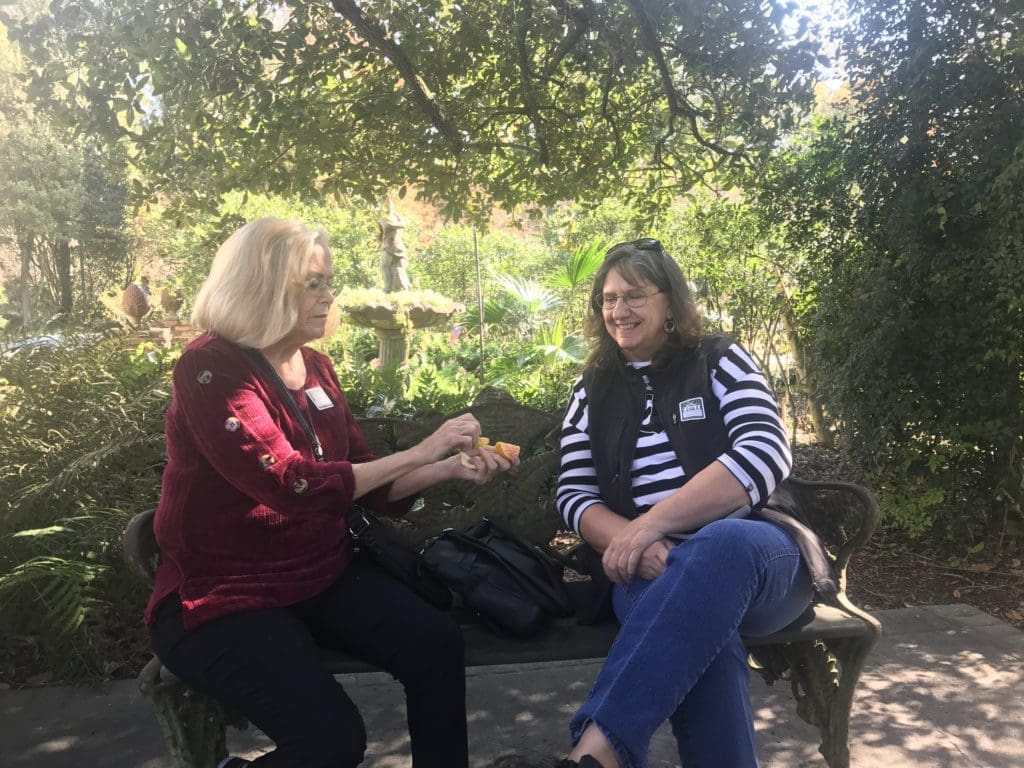
St. Amico Chapel
At the dead-end of St. Amico Lane
Donaldsonville, LA
GPS coordinates: 30.1051249, -90.9450903

Now, this was an interesting story. This is clearly not a plantation, but I came across its story online and was very curious to see it. This small chapel was built in 1906 by Anthony Tony Musco in honor of St. Amico, who he believed to have saved his two-and-a-half-year-old son Lucien’s life.
According to the story I read, Lucien, in spite of a doctor’s care, had been ill for 19 days. Mr. Musco happened upon a mysterious dark man on the road who identified himself as a healer. Mr. Musco immediately took the man to his home to treat his son. The man performed a few rituals, and the boy miraculously recovered.
The child told his parents that it was not the dark man they talked about that had cured him and showed his parents a picture of St. Amico saying he was the person that had been at his bedside. This remarkable recovery occurred in just one day, and the child was healthy from then on.
The family was shocked and embarrassed that they had not treated the healer with the honor a saint deserved. The father built this chapel to honor St. Amico for restoring his son’s health. The family has celebrated St. Amico’s feast day on the first Sunday after Easter every year since 1912.
I was unable to find any information about this chapel dated later than 2017, so I do not know if feast day is still occurring today.
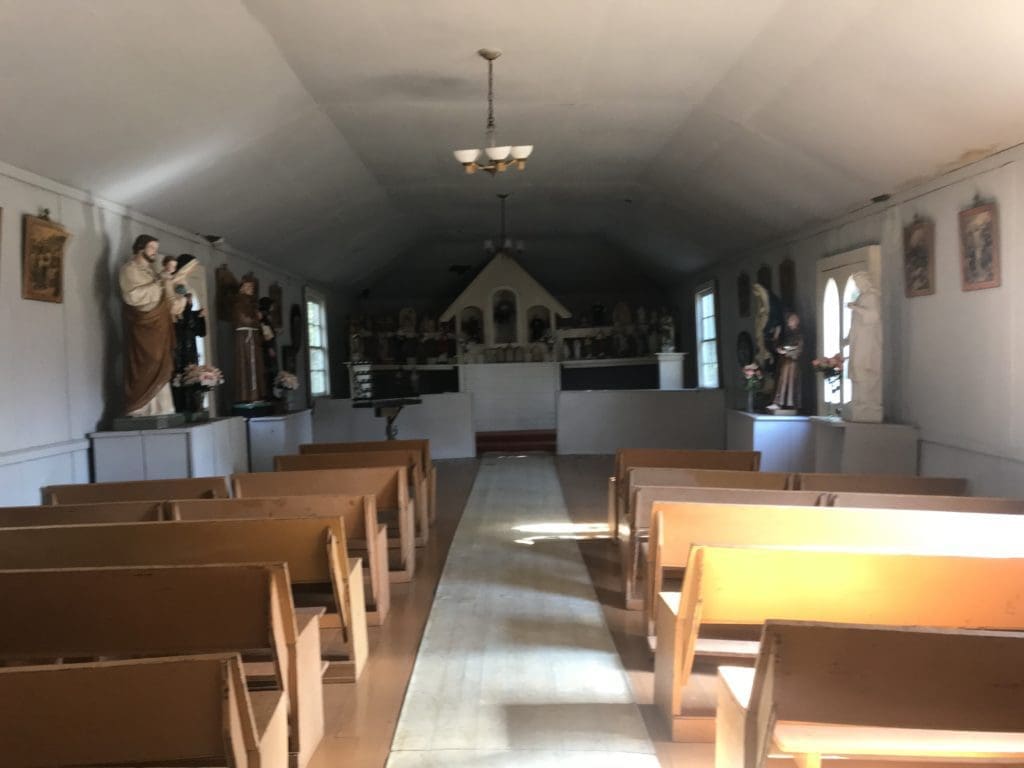
The derelict-looking chapel is located at the end of a residential street. The interior is tidy indicating regular maintenance, and it clearly is an active place of worship.
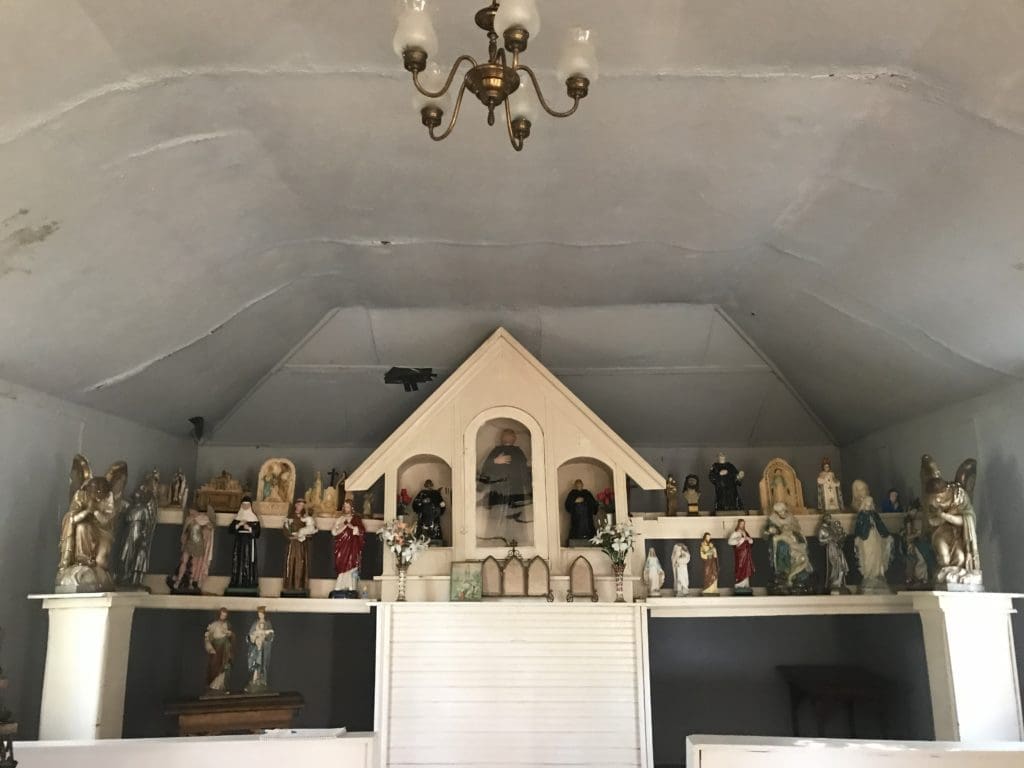
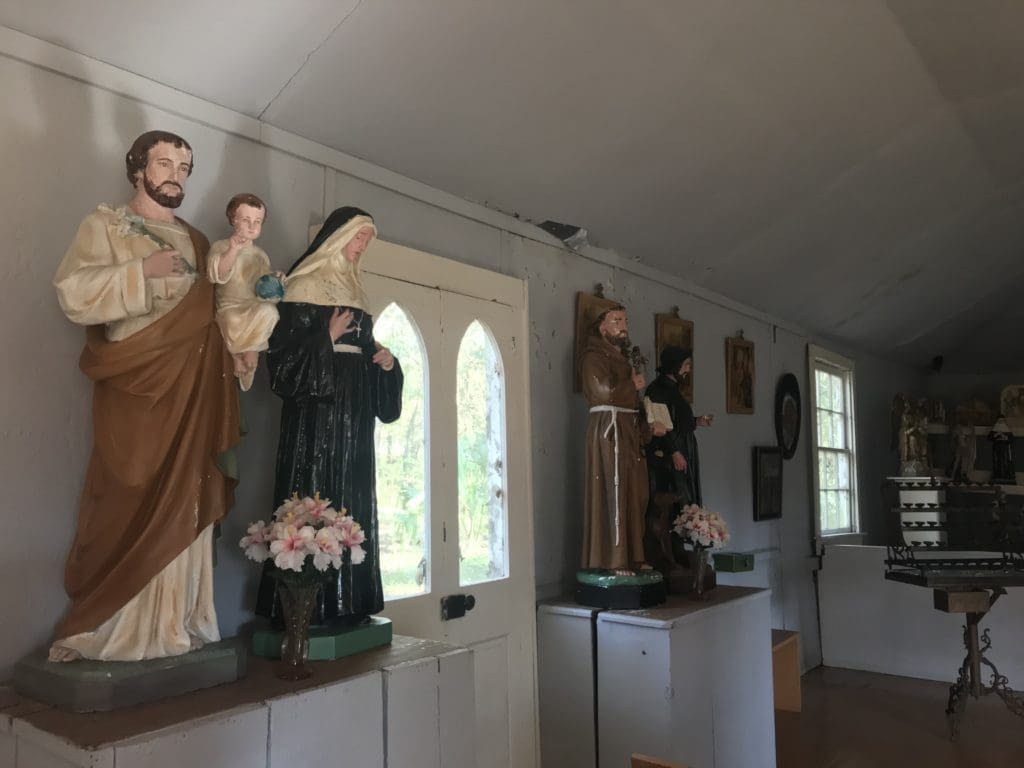
Poche Plantation
6554 State Highway 44
Convent, LA 70802
www.pocheplantation.com
(225)-562-7728

Poché Plantation was built in 1867, after the Civil War. The house is a Victorian Renaissance Revival style owned initially by Judge Felix Pierre Poché. The Judge was a founding member of the American Bar Association and kept one of the very few existing printed accounts of the Civil War.
This is in a diary written in French and describes the Civil War in Louisiana. It is one of only a few remaining written accounts of the Civil War in Louisiana from a Confederate perspective.
In 2006 Poché Plantation was home to evacuees from the destruction and devastation caused by Hurricane Katrina and Rita and provided shelter for over 300 evacuees fleeing the flood.
Poché Plantation was built in 1867, after the Civil War. The house is a Victorian Renaissance Revival style owned initially by Judge Felix Pierre Poché. The Judge was a founding member of the American Bar Association and kept one of the very few existing printed accounts of the Civil War.
This is in a diary written in French and describes the Civil War in Louisiana. It is one of only a few remaining written accounts of the Civil War in Louisiana from a Confederate perspective.
In 2006 Poché Plantation was home to evacuees from the destruction and devastation caused by Hurricane Katrina and Rita and provided shelter for over 300 evacuees fleeing the flood.
This property is also the site of an RV park! That is just a bit out of the ordinary, I thought. We did not call ahead to schedule a tour and found no one available to give us a home tour.
I talked to a friendly and very helpful lady at the phone number shown above, and she did attempt to arrange a visit for us. It just didn’t work out, unfortunately. Another trip?
San Fransico Plantation
2646 Hwy. 44
Great River Road
Garyville, LA
888.322.1756
http://www.sanfranciscoplantation.org/

This was the most colorful plantation along River Road. It was built in the Gothic Steamboat style and did, at some angles, look like a Mississippi riverboat. This plantation inspired Frances Parkinson Keyes to write Steamboat Gothic, a novel about a steamboat gambler who moves his family to Louisiana.
Take a look at the plantation website shown above for information regarding the incredible history to be found here. The owner since 1974, the San Francisco Plantation Foundation, was funded by Marathon Oil, and it has painstakingly restored and maintained San Francisco Plantation.
The tour guide was full of information and history that held our attention from start to finish.
The Myrtles
7747 US-61
St Francisville, LA 70775
(225) 635-6277
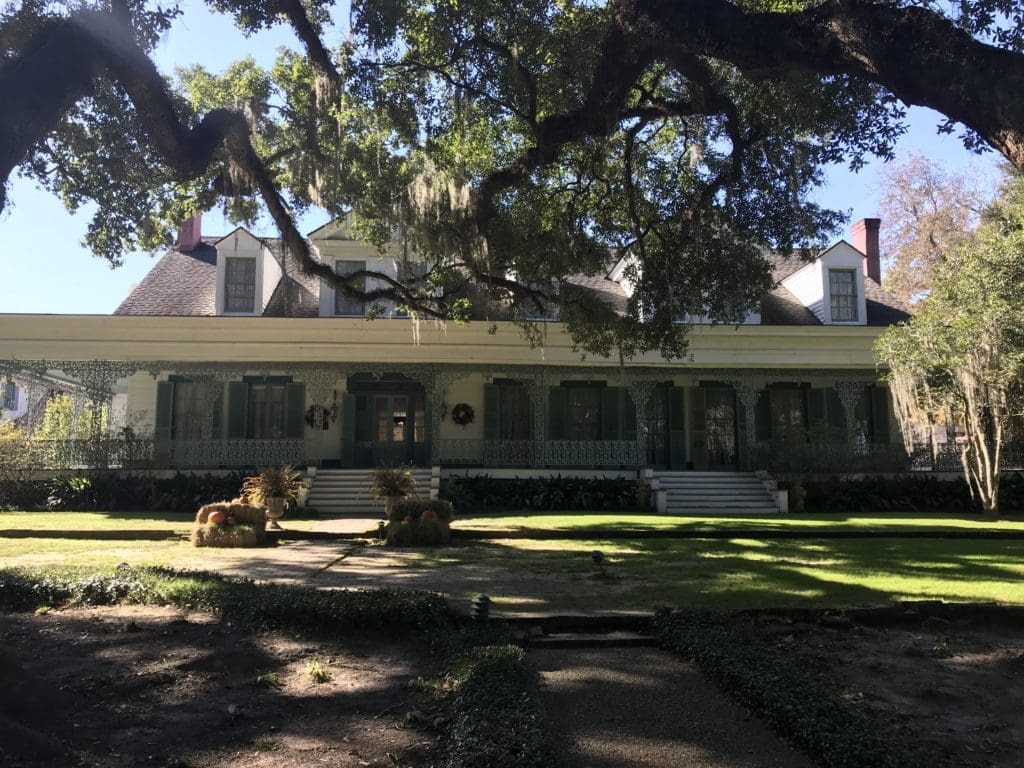
After roaming around on River Road, we headed a bit north of Baton Rouge to the lovely town of St. Francisville and The Myrtles Plantation. The Myrtles is a 1796 National Historic Register plantation home. It is undoubtedly famous for its history and beauty, but many visitors make their way here, hoping to see one of the resident ghosts!
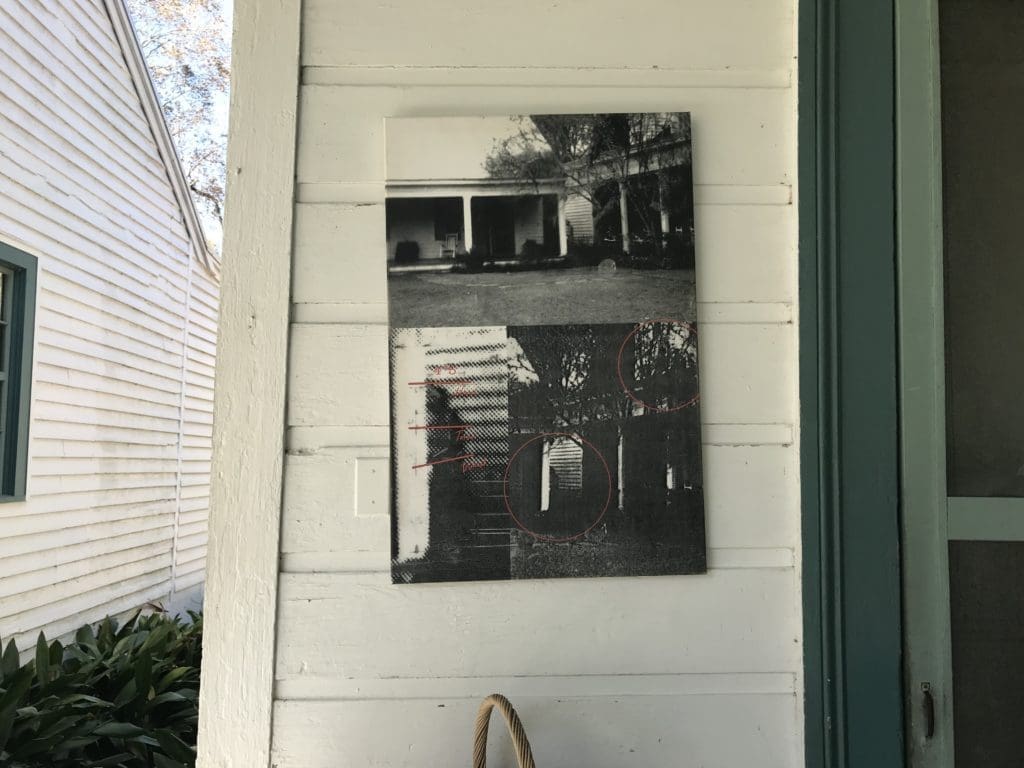
The General’s Store and the Butler’s Pantry of the mansion
A Ghost Story
In 1908 Clark and Sara Woodruff lived and managed the property, which was named Laurel Grove at the time. The spellbinding story our tour guide told us is that Clark Woodruff brought a slave woman named Chloe into the home to care for the three Woodruff children.
She had a bad habit of eavesdropping and got caught listening to Mr. Woodruff and his guests outside a door. Clark Woodruff flew into a rage, cut off one of her ears, and banished her to work in the kitchen outside the main house.
In an attempt to gain entry back into the main house, she baked a birthday cake laced with poisonous oleander leaves for one of the children’s birthdays. Chloe believed she would be sent back to the main house to care for the children when they became ill from eating the cake.
Unfortunately, she put way too much oleander in the cake and Sara Woodruff and her two daughters died after eating it. What a tremendously sad story! When I returned home, I read from other sources that yellow fever, a common illness at that time, was actually the cause of Sara’s and her daughters’ deaths.
I so enjoyed hearing the detailed and descriptive story from our guide, though!
The Myrtles is a perfect vacation destination with a bed and breakfast, general store, guided day tours, and mystery tours on site. The plantation itself is well worth the small entry fee and time spent, and St. Francisville has many unique gift shops to check out before or after a plantation tour.
We enjoyed browsing through all the shops that time would allow after we had a delicious lunch at the Magnolia Cafe. The plantation and St. Francisville are “don’t miss” locations, in my opinion.
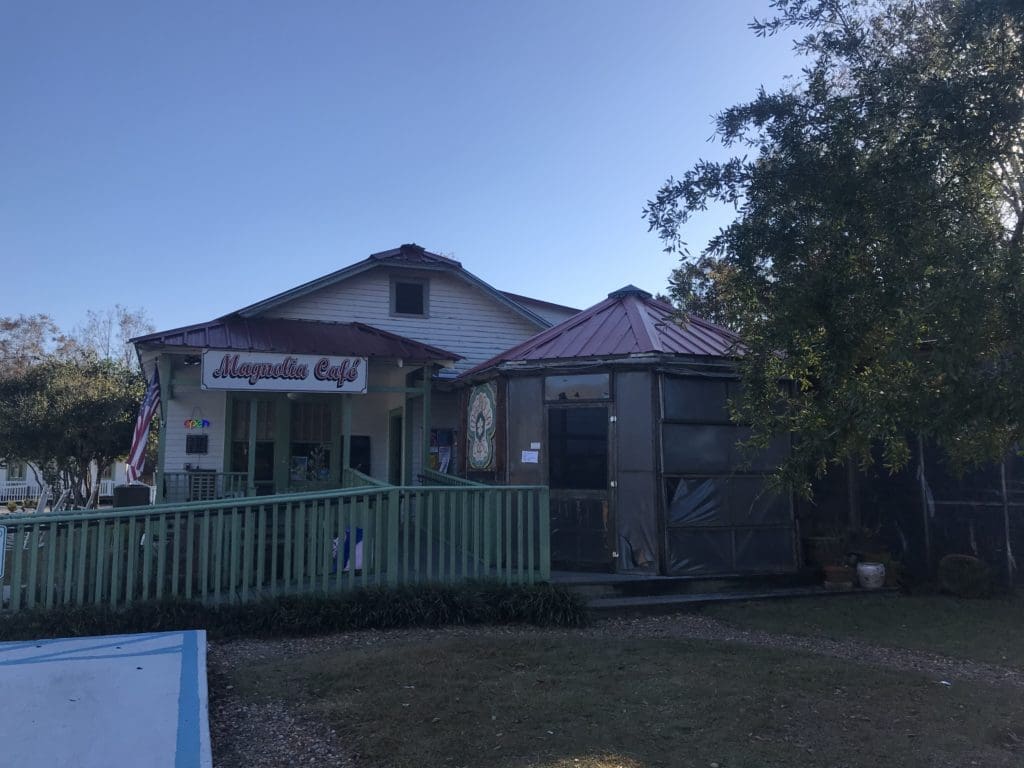
Rosedown Plantation
12501 Highway 10
St. Francisville, LA 70775
(888) 376-1867

Rosedown is one of Louisiana’s most distinguished museum houses and boasts one of the most important historic gardens. The property was in a sad state of disrepair in 1956 when Catherine Fondren Underwood from Houston, Texas, purchased it from the heirs of the original owners. It has since been restored to its former beauty.
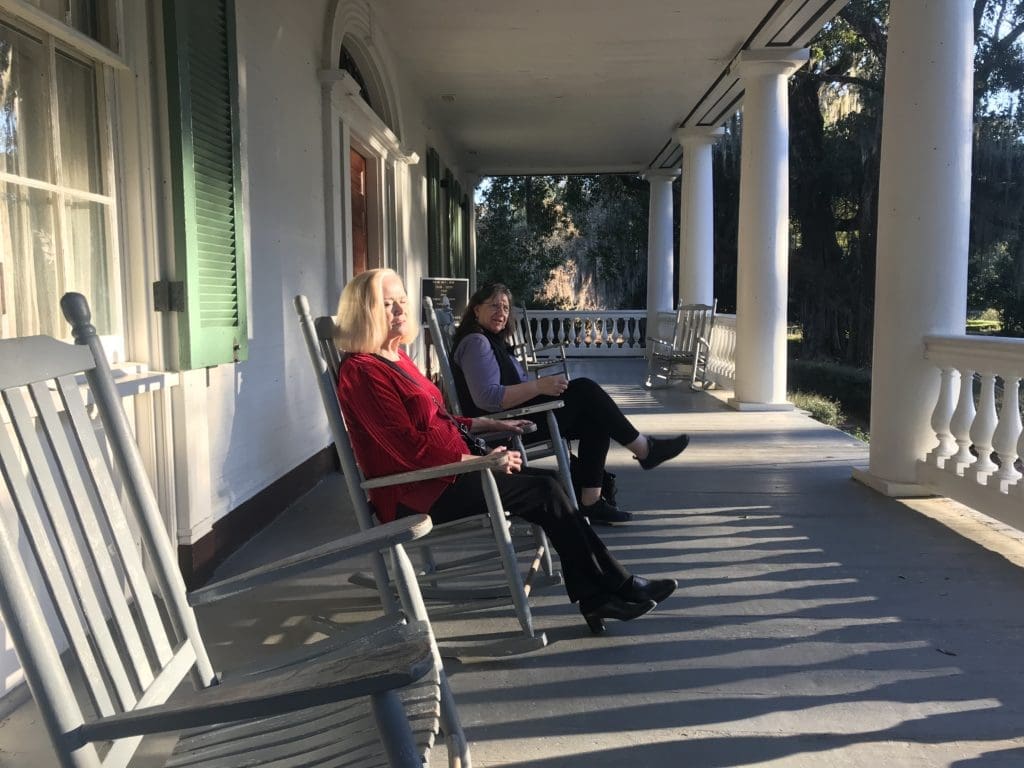
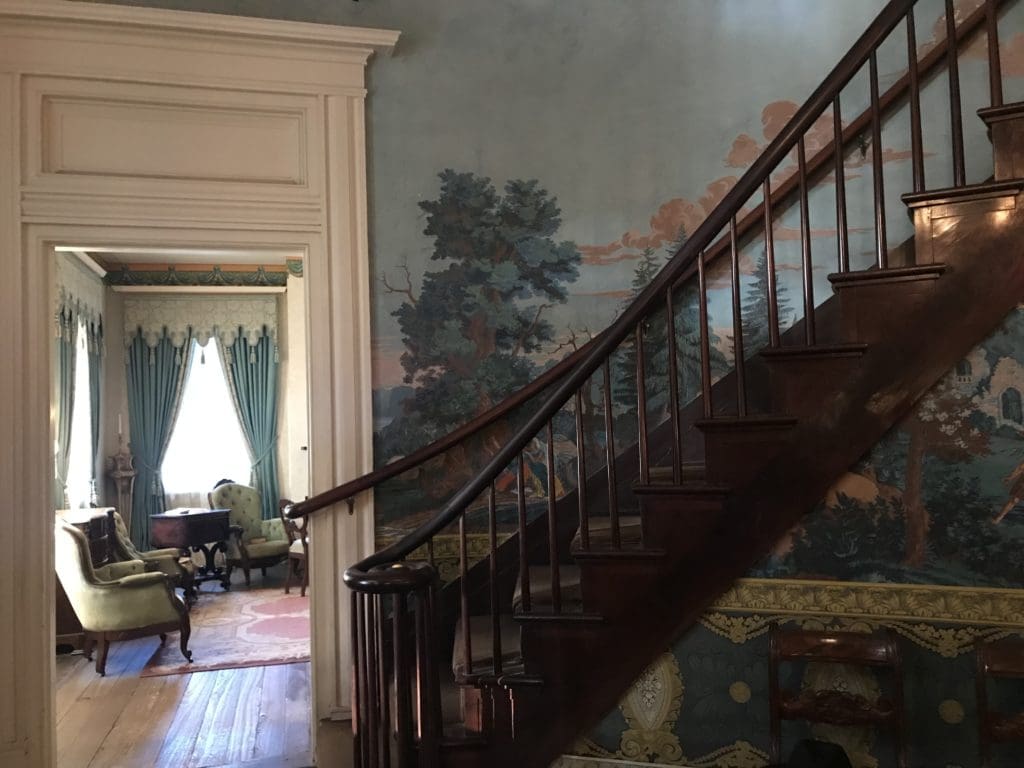
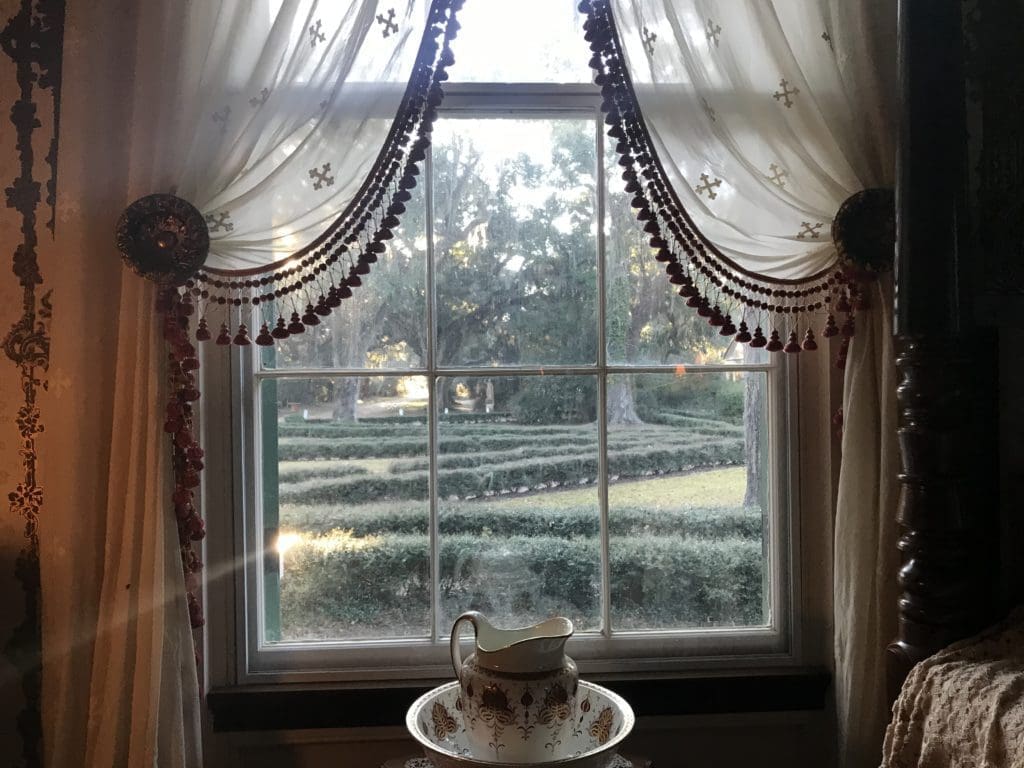
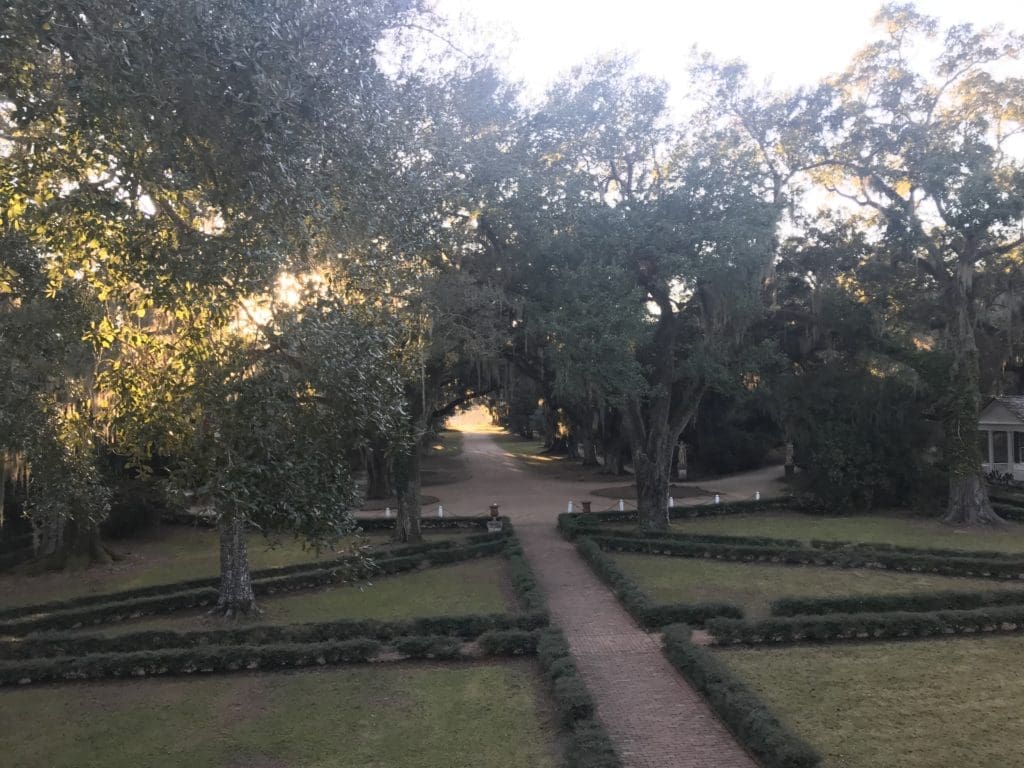
The Cathedral of St. John
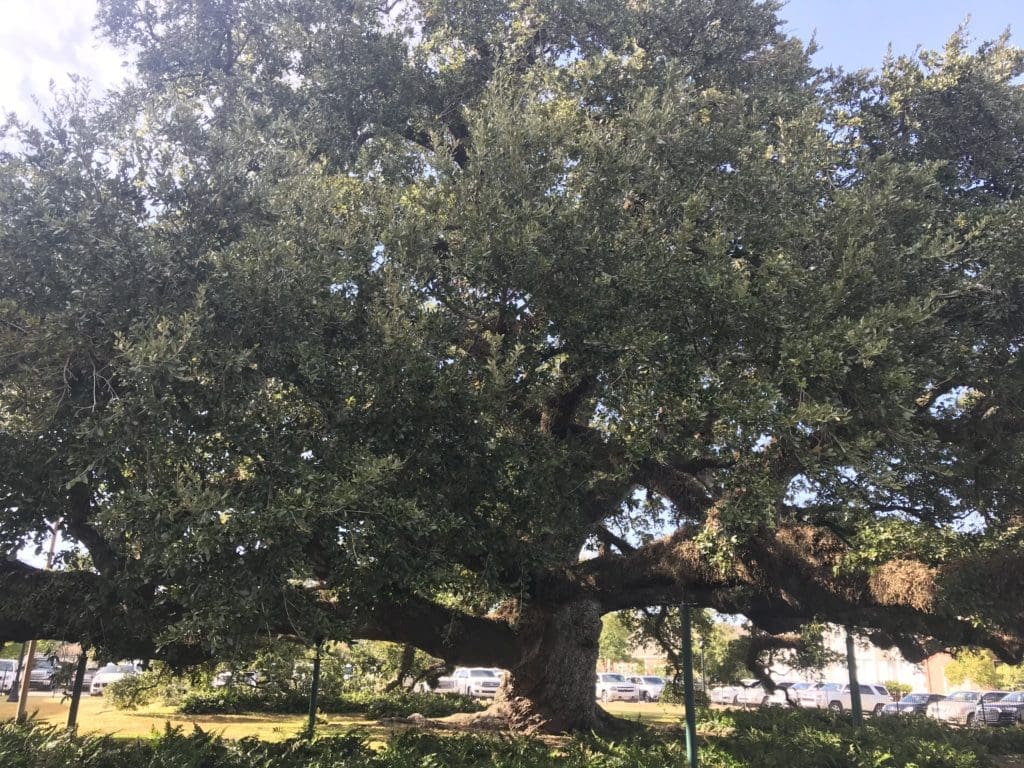
On our way back to Texas, we stopped by The Cathedral of St. John the Evangelist to visit the adjacent cemetery where Earney’s grandmother is buried. This cemetery is the oldest in Lafayette and contains mostly above-ground tombs. We enjoyed a fascinating walk through the beautiful and sometimes very old monuments.
We did take a look inside the church and found it has a museum, gift shop, and even conducts tours. A majestic live oak tree over five hundred years old graces the church grounds.
Geocaching
We managed to track down a couple of geocaches on this trip. One was at the cemetery mentioned above, which was unusual. Usually, geocaches are not hidden on cemetery property. Another was found along the Welcome Center at Grosse Tete (“Big Head”), a charming stop with a lot of history.
Our trip was too short to properly visit all the plantations on my list or to spend long enough at the plantations we were able to visit. We will pick this trip up again, and probably again.
I wanna go next time .. Very interesting!
Arent’ these churches really interesting; such a history! A new trip is coming up.
Looking forward to the next plantation tour.
Oh, I am too. There are many more to see.